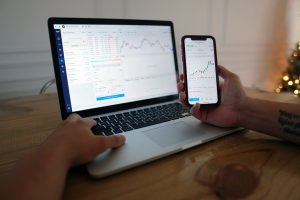Forex traders rely heavily on different economic indicators to assess the performance of currencies. One of the most important indicators is the dollar index, which measures the value of the US dollar against a basket of other currencies. However, there are several dollar indices available, which can make it difficult for traders to determine which one is best suited for their needs. In this article, we will explain the different dollar indices and help traders decide which one is best for their forex trading strategy.
The first and most commonly used dollar index is the US Dollar Index (DXY). The DXY measures the value of the US dollar against a basket of six major currencies: the euro, yen, British pound, Canadian dollar, Swedish krona, and Swiss franc. The index was created by the Intercontinental Exchange (ICE) in 1973 and is widely followed by traders and investors worldwide.
The DXY is a weighted index, which means that each currency in the basket has a different weight based on its importance in international trade. The euro, for example, has the highest weight at 57.6%, while the Swedish krona has the lowest weight at 4.2%. The DXY is also updated every year to reflect changes in trade patterns and currency values.
The DXY is a useful tool for forex traders because it provides a broad overview of the strength or weakness of the US dollar. If the DXY is rising, it indicates that the US dollar is gaining strength against the other currencies in the basket. Conversely, if the DXY is falling, it suggests that the US dollar is weakening.
However, the DXY has some limitations that traders need to be aware of. Firstly, it only measures the value of the US dollar against six currencies, which may not accurately reflect the performance of the US dollar against other currencies. Secondly, the DXY is heavily weighted towards the euro, which means that changes in the euro can have a significant impact on the index.
Another dollar index that traders may consider is the Trade Weighted US Dollar Index (TWI). The TWI measures the value of the US dollar against the currencies of the US’s major trading partners. The index is calculated by the Federal Reserve Bank of St. Louis and is based on data from the US Census Bureau.
The TWI includes a wider range of currencies than the DXY, which makes it a more comprehensive measure of the value of the US dollar. However, the TWI does not include emerging market currencies, which may be important for some forex traders.
A third dollar index that traders may consider is the Broad US Dollar Index (BDI). The BDI measures the value of the US dollar against a basket of 26 currencies, including the currencies of major trading partners, emerging market currencies, and other currencies that are important in international trade.
The BDI is a more inclusive measure of the value of the US dollar than the DXY or TWI. However, the BDI may be more difficult to interpret because it includes a wider range of currencies.
In conclusion, there is no single dollar index that is best for all forex traders. The choice of index will depend on a trader’s individual needs and trading strategy. The DXY is a widely followed index that provides a broad overview of the value of the US dollar, while the TWI and BDI are more comprehensive measures that include a wider range of currencies. Traders should carefully consider the strengths and limitations of each index before deciding which one to use.





